Low, Medium, and High-Carbon Steel: Everything You Need to Know
by AMC
Posted on April 18, 2024 at 03:57 PM
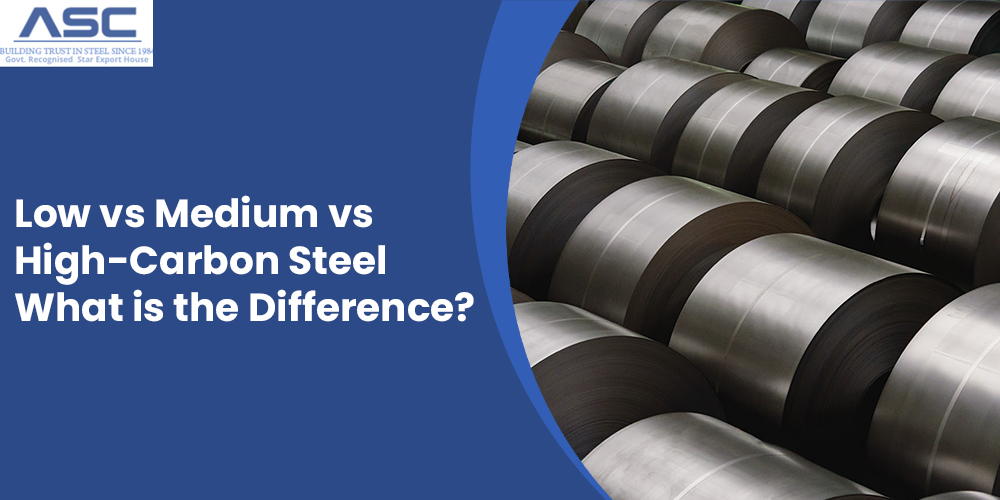
Welcome to our comprehensive guide on low, medium, and high-carbon steel. Each type is distinguished by its carbon content, which significantly influences its properties. Low-carbon steel, with its lower carbon content, offers excellent weldability and ductility, making it suitable for applications requiring formability and versatility. Medium-carbon steel strikes a balance between strength and flexibility, finding use in automotive parts and machinery components. On the other hand, high-carbon steel, with its increased carbon content, delivers exceptional hardness and wear resistance, making it ideal for cutting tools and springs. In this guide, explore into the unique characteristics of each type, their applications across industries, and key considerations for choosing the right steel for your specific needs.
What is low-carbon steel?
Low-carbon steel, often referred to as mild steel, has a relatively low proportion of carbon compared to other steel varieties. Typically, its carbon content ranges between 0.05% and 0.32% by weight. This characteristic gives low-carbon steel moderate strength while enhancing its malleability and ductility in comparison to high-carbon steel.
One of the key advantages of mild steel is its cost-effectiveness. Its lower requirement for carbon and additional alloying elements contributes to its affordability compared to other steel grades. Additionally, it is more readily accessible and easier to manipulate than higher-carbon steels, making it a favored option across various applications.
What are the uses of low-carbon steel?
Low-carbon steel finds utility in structural applications despite its lower strength relative to other steel types. It is also employed in machinery components, aiding in cost reduction during machining processes. Its ease of shaping facilitates faster production cycles and reduced machining expenses compared to alternative materials like aluminum.
Components made of low-carbon steel
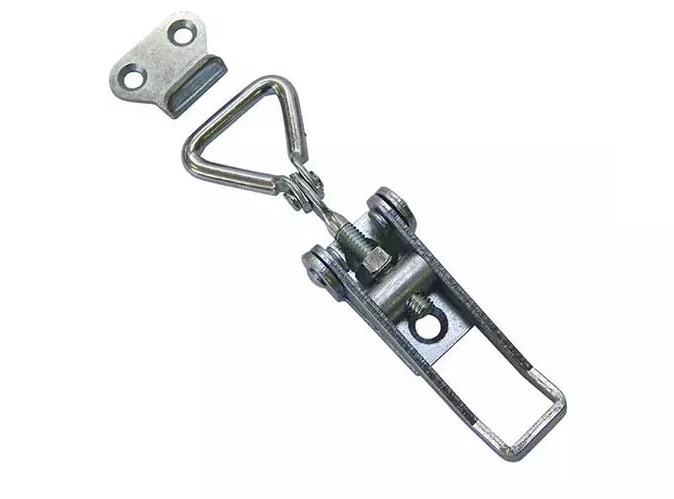
Adjustable latch
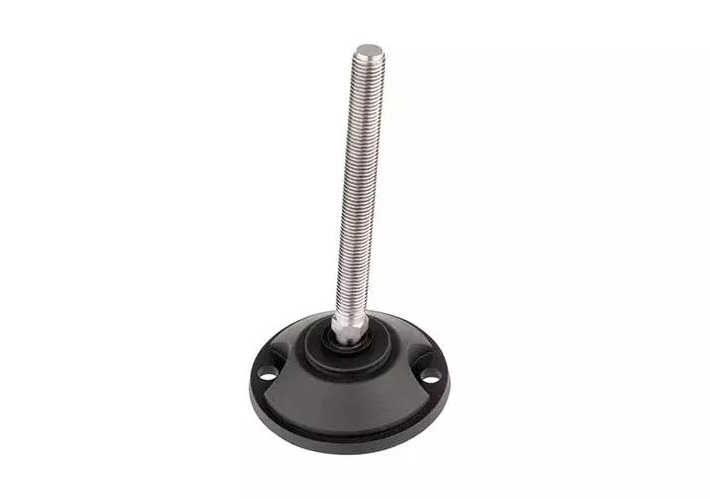
Stud Mount Leveling Feet
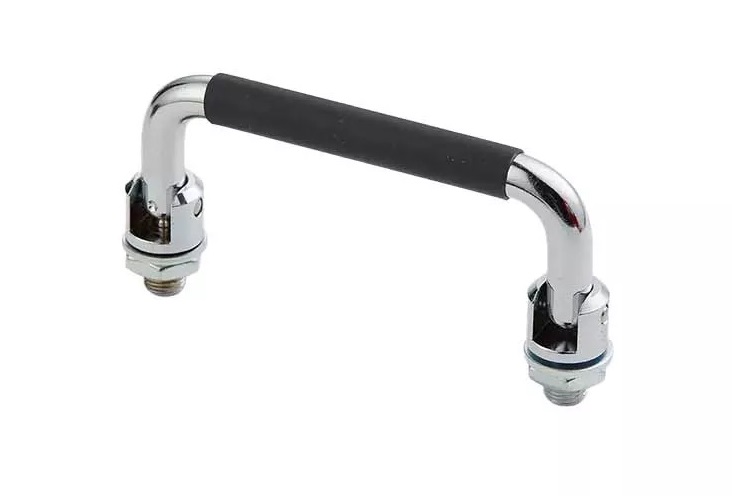
Metal Pull Handle
Types of low-carbon steel
There are different low-carbon steels with varying amounts of carbon. Below are examples of different types and their applications:
| Type | Industry | Applications |
|---|---|---|
| Low-carbon structural steel | Construction | Buildings, bridges |
| Low-carbon sheet and strip steel | Sheet metal work | Automotive body panels, appliances and other uses that require thin, flat material |
| Low-carbon tubing and piping steel | Construction, automotive, heavy equipment, oil and gas | Mechanical tubes, pipes for fluid transport, and structural tubing |
| Low-carbon pressure vessel steel | Heavy equipment, machinery manufacturing | Boilers, pressure vessels and other uses where material must withstand high internal pressures |
| Low-carbon galvanized steel | Construction, HVAC, automotive | Roofing, automotive body panels, ductwork |
| High-strength low-alloy (HSLA) steel | Construction | Building frames, bridges, support structures |
Low-Carbon Steel Grades
The grades of low-carbon steel are defined by standards set by organizations like ASTM International, AISI, and SAE:
- ASTM International: Known for developing and publishing technical standards globally.
- AISI: Plays a significant role in advancing steel technology and standards.
- SAE: Focuses on automotive engineering and related standards.
Among these, ASTM standards are widely used. For instance, ASTM A307 covers specifications for carbon steel bolts, studs, and threaded rods with a 60,000 psi tensile strength.
Under ASTM A307, there are two grades:
- Grade A: Suited for general applications with low-stress requirements.
- Grade B: Designed for applications needing higher strength, including flanged joints in piping systems.
Standards ensure materials meet specific performance criteria. Grades within these standards, such as those in SAE J403, vary based on factors like chemical composition, heat treatment, and mechanical properties. These distinctions result in different grades within the same standard, as seen in the table below, where carbon content dictates grade differences.
Here are some commonly used grades of low-carbon steel:
| Standard | Grade | Application |
|---|---|---|
| ASTM A36/A36M | A36 | Structural steel grade used in buildings, bridges, construction equipment |
| ASTM A513/A513M | 1010 | Automotive parts, machinery components |
| ASTM A53/A53M | B | Structural and pressure applications, such as water and gas transmission |
| ASTM A516/A516M | 70 | Boilers and pressure vessels |
| SAE J403 | 1006 | Wire products and fasteners |
| SAE J403 | 1008 | Sheet metal work, automotive components, and wire products |
| SAE J403 | 1010 | Cold heading, automotive components, and sheet metal work |
| ASTM A1011/A1011M | 33 | Sheet metal work, automotive components and construction materials |
Properties of low-carbon steel
| Property | Value |
|---|---|
| Density | 0.103 – 0.292 lb/in³ |
| Tensile Strength, Yield | 20300 - 347000 psi |
| Fracture Toughness | 30.0 – 105 ksi-in½ |
| Shear Modulus | 10200 – 11600 ksi |
| Melting Point | 2600°F |
| Thermal Conductivity | 176 – 645 BTU-in/hr-ft²-°F |
Medium Carbon Steel

What is medium-carbon steel?
Medium-carbon steel falls within the carbon content range of 0.3% to 0.6%. It strikes a balance between the ductility of low-carbon steel and the strength of high-carbon steel.
The increased carbon content in medium-carbon steel contributes to its greater strength and hardness compared to low-carbon steel. However, this also reduces its ductility and makes it less malleable, requiring more effort in forming and welding processes. Heat treatment, such as quenching and tempering, is often necessary to achieve desired mechanical properties.
Additionally, medium-carbon steel typically contains manganese, which further enhances its strength and hardenability. The manganese content in this steel ranges from 0.30% to 0.60%, contributing to its overall performance characteristics.
What are the uses of medium carbon steel?
Medium-carbon steel finds a range of applications where a balance between strength and ductility is crucial. Here are some common uses:
Types of medium-carbon steel
| Type | Industry | Application |
|---|---|---|
| Medium-carbon structural steel | Construction, Manufacturing | Buildings, bridges, heavy-duty equipment |
| Medium-carbon sheet and strip steel | Sheet metal work | Machinery parts, Automotive parts |
| Medium-carbon tubing and piping steel | Construction, automotive, heavy equipment | Mechanical tubes, pipes for fluid |
| Medium-carbon pressure vessel steel | Oil and gas, food and beverage, pharmaceutical | Pressure vessels |
| Medium-carbon alloy steel | Automotive, Heavy machinery | Gears, shafts, axles, connecting rods |
| Medium-carbon quenched and tempered steel | Automotive, Construction, Heavy machinery | Gears, axles, transmissions, crane booms, excavation arms |
Grades of medium-carbon steel
| Standard | Grade | Application |
|---|---|---|
| SAE J403 | 1045 | Gears, shafts, machine parts |
| SAE J404 | 4140 | Gears, axles, aircraft landing gears, and drilling equipment |
| ASTM A29 | 1045 | Axles, bolts, studs, and other machinery parts |
| ASTM A576 | 1045 | Bolts, studs, couplings, bushings, shafts and gears |
| ASTM A29 | 4140 | Gears, axles, and shafts |
| ASTM A434 | Class BD (AISI/SAE 4140) | Bolts and other fasteners, connecting rods, gears and shafts |
| ASTM A829 | 4140 | Gears, axles, and drilling equipment |
Properties of medium-carbon steel
| Property | Value |
|---|---|
| Density | 0.280 – 0.285 lb/in³ |
| Tensile Strength, Yield | 35500 – 252000 psi |
| Fracture Toughness | 73.7 – 130 ksi-in½ |
| Shear Modulus | 10400 – 11900 ksi |
| Melting Point | 2597– 2800°F |
| Thermal Conductivity | 152 – 361 BTU-in/hr-ft²-°F |
Medium Carbon SteelHigh Carbon Steel

What is high-carbon steel?
High-carbon steel contains a carbon content ranging from 0.60% to 1.5%. This high carbon content contributes to its exceptional hardness, tensile strength, and wear resistance, making it ideal for applications requiring high strength and resistance to wear and abrasion.
High-carbon steel is renowned for its corrosion resistance due to the elevated carbon levels. However, its increased brittleness and reduced ductility make it more prone to cracking under certain conditions. Welding high-carbon steel poses challenges due to the risk of brittleness and cracking in the heat-affected zone, requiring specialized techniques to mitigate these issues.
What are the uses of high-carbon steel?
High-carbon steel finds extensive use in applications that demand exceptional wear resistance and durability. One of its primary applications is in the manufacturing of springs, where its ability to withstand high stress and maintain elasticity is crucial, especially in automotive suspension systems and industrial machinery. Additionally, high-carbon steel is preferred for cutting tools such as knives, blades, and saws due to its inherent hardness and edge retention properties, ensuring precise and efficient cutting performance over prolonged usage. Bearings, vital components in machinery and automotive systems, benefit from high-carbon steel's strength and resistance to wear, ensuring reliable and long-lasting performance under heavy loads and friction. The robustness of high-carbon steel also makes it suitable for use in railway tracks, wire ropes for lifting equipment, and various automotive parts subjected to high stress. Its application extends to chisels, drills, and other cutting implements, where hardness, sharpness, and durability are paramount for accurate cutting tasks. In industrial machinery, components like gears, shafts, and bearings are often made from high-carbon steel to withstand rigorous usage, resist wear, and maintain operational efficiency. It's important to note that plain high-carbon steel, lacking significant alloying elements, serves specific applications where high hardness and strength without specific alloy enhancements are required.
Types of high-carbon steel
| Type | Industry | Application |
|---|---|---|
| Plain high-carbon steel | Manufacturing, automotive, construction | Springs, knives, cutting tools, brake components |
| High-carbon tool steel | Manufacturing, metalworking, woodworking | Cutting tools, punches, dies, injection molding tools, extrusion dies, router bits |
| High-carbon bearing steel | Industrial machinery, automotive, aerospace | Ball and roller bearings for engines; also, transmissions, wheels, heavy machinery, gearboxes, pumps |
| High-carbon spring steel | Electronics, automotive, manufacturing | Leaf springs, coil springs, machinery, springs for electronic devices |
Grades of high-carbon steel
| Standard | Grade | Application |
|---|---|---|
| ASTM A29/A29M | AISI/SAE 1060 | Springs, gears, axles, heavy-duty machinery components |
| ASTM A29/A29M | AISI/SAE 1065 | Springs, cutting tools, industrial knives and blades |
| ASTM A29/A29M | AISI/SAE 1070 | Springs, automotive suspension components, agricultural machinery parts |
| ASTM A29/A29M | AISI/SAE 1080 | Heavy-duty springs, automotive components, heavy machinery parts |
| ASTM A295 | AISI/SAE 52100 | Bearing steel used in the manufacture of ball and roller bearings |
| ASTM A600 | AISI/SAE M2 | High-speed tool steel used for cutting tools, drills, and taps |
| ASTM A686 | AISI/SAE W2 | Water-hardening tool steel used for cutting tools, dies, punches, and woodworking tools |
Properties of high-carbon steel
| Property | Value |
|---|---|
| Density | 0.0163 – 0.298 lb/in³ |
| Tensile Strength, Yield | 39900 – 484000 psi |
| Fracture Toughness | 12.0 – 150 ksi-in½ |
| Shear Modulus | 11300 – 12000 ksi |
| Melting Point | 2,800-2,900°F |
| Thermal Conductivity | 1132 – 361 BTU-in/hr-ft²-°F |
The differences between low, medium and high-carbon steel
| Low-carbon steel | Medium-carbon steel | High-carbon steel | |
|---|---|---|---|
| Carbon Content | 0.05% to 0.32% | 0.30% to 0.60% | 0.60% to 1.5% |
| Characteristics | Ductile Malleable Tough Easily joined and welded Poor corrosion resistance |
Stronger Harder Less ductile Less malleability Good corrosion resistance |
Very strong Very hard Poor ductility Poor malleability Better corrosion resistance |
Conclusion
Low, medium, and high-carbon steels exhibit distinct differences in their carbon content and mechanical properties. Low-carbon steel is known for its high ductility and ease of fabrication, making it suitable for a wide range of applications where strength requirements are moderate. Medium-carbon steel strikes a balance between strength and ductility, requiring heat treatment for optimal performance and finding use in applications needing higher strength and toughness. High-carbon steel, while the hardest and strongest of the three, is also more brittle and challenging to work with but is preferred for applications demanding exceptional wear resistance and durability. Understanding these differences allows for informed material selection based on specific performance criteria and application requirements.
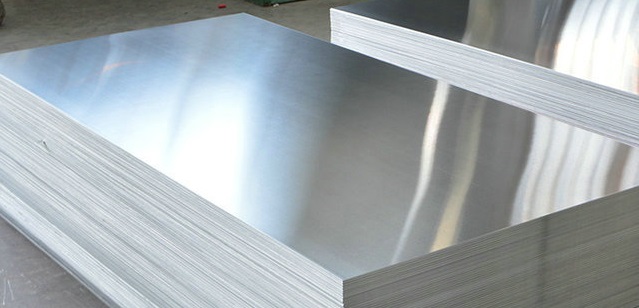
ASTM A36 Mild/ Low Carbon Steel Properties & Chemical Compositions
STM A36 stands out as the prime choice for mild and hot-rolled steel applications. Renowned for its exceptional welding properties, it proves versatile across various fabrication processes
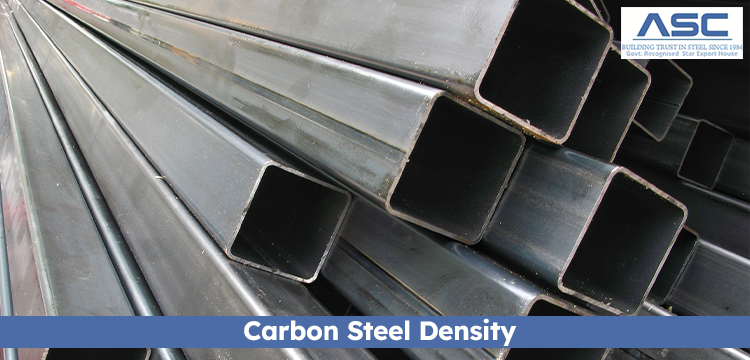
Carbon Steel Density
Carbon steel is a robust material consisting mainly of iron and carbon, with small amounts of other elements. It is extensively used in various industries due to its durability and strength. The carbon content varies in different grades of carbon steel, with higher carbon levels providing increased hardness and strength.
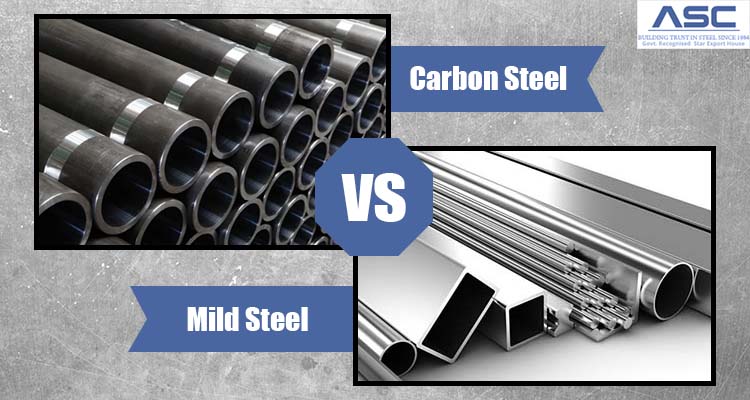
Carbon Steel vs. Mild Steel: Which is best for you?
The question of whether carbon steel or mild steel is better is actually a bit of a trick question, since mild steel is a type of carbon steel. Carbon is a ubiquitous element in all steel, and if it is the primary alloying element, then the steel is classified as carbon